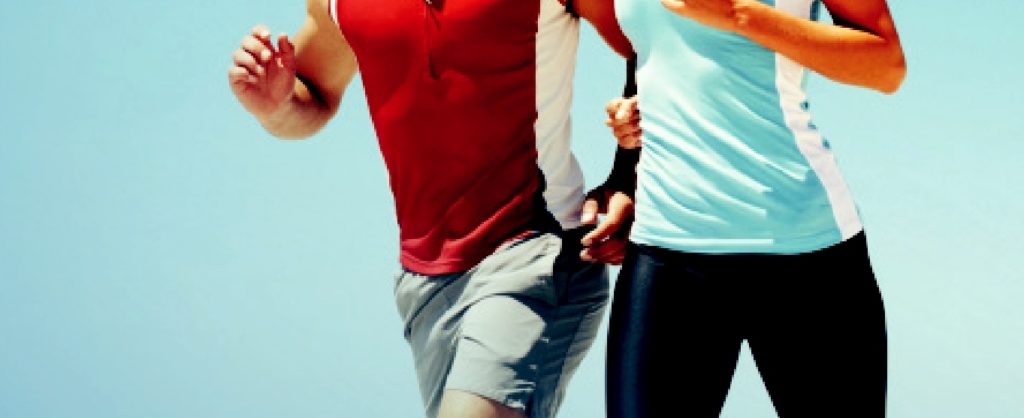It’s previously been thought that the discs in your spine don’t respond well to physical activity. But new Australian research suggests otherwise.
It shows that any physical activity is good for your spine.
Transcript of interview by Dr Norman Swan, Health Report, ABC News of Associate Professor Daniel Belavy, The Institute for Physical Activity and Nutrition at Deakin University.
Norman Swan: Hello and welcome to this week’s Health Report with me, Norman Swan. Today, jogging and your back.
Most people will suffer an episode of back pain some time in their lives, often more than one. It’s a huge cause of lost days at work and medical costs, not to mention the disability that can be involved. You can find experts who say that jogging is poison for the back because it pummels the spine. But a world first study from Deakin University on the effects of jogging and running on intervertebral discs suggests otherwise. The lead author is Daniel Belavy and he’s in our Melbourne studio. Welcome to the Health Report.
Daniel Belavy: Good evening Norman.
Norman Swan: So tell us about this study.
Daniel Belavy: Well, as you introduced, back pain is a massive problem for Australian society, and it’s the leading cause of disability and lost productivity in the country, even when you account for more deaths due to other diseases. And in managing this sort of issue, what I wanted to look at was to see can we find ways to, for example, strengthen the discs in the back. And the conventional wisdom in the research field is that either you can’t or if there is an effect, that it’s going to be too slow to have a meaningful effect in a person’s life.
Norman Swan: And whilst there was some evidence in animals, there was no evidence in humans that exercise did make a difference.
Daniel Belavy: Precisely, and the thing is that what might happen or be relevant in an animal mightn’t be the case in humans because…
Norman Swan: And we’re talking about the shock absorbers between the vertebra, the bones in the spine.
Daniel Belavy: Precisely, yes, and as you said, this research has been done with animals before, but their metabolism is a lot faster and also they walk on all fours. And whether that applies then to humans is another matter.
Norman Swan: So tell us what you did in the study?
Daniel Belavy: Well, what I decided to do is to look at certain kinds of physical activity that we think are possibly going to be at the very worst not detrimental to the spine at high volumes, or they might be beneficial. Based upon the work from animals and also from other studies we’ve seen before, I thought that examining walking or running might be a good way to see if this exercise can actually improve the discs.
Norman Swan: So you have three groups of relatively young people, 25, 35, men and women, with varying levels of activity. Tell us about their varying levels of activity.
Daniel Belavy: Well, we had obviously a group of people who didn’t do any sport at all, they were healthy, they had no back problems at all, but they just were simply not involved in any regular physical activity. And then we had a group of people who regularly run marathons, so running at least 50 kilometres a week and doing that for at least five years. And also a group of people who were regular joggers, so running 20 to 40 kilometres a week, and also for at least five years, but also, again, no other kind of sports. We just looked at people who just ran. So triathletes and so forth we didn’t look at.
Norman Swan: And you did MRIs on their backs?
Daniel Belavy: Yes.
Norman Swan: What did you find? So this is not a randomised trial, this is just seeing what the effect was.
Daniel Belavy: Just seeing what the effect was, because there is no data in humans, before you go off and do the randomised controlled trial you need to see if there is any kind of effect at all, and back in the studies on bone in the late ’80s and early ’90s you needed that first cross-sectional study between different types of sports or different types of athletic groups to see if there was a difference, and that was then the justification to say, okay, let’s go off and do a randomised controlled trial.
Norman Swan: So what did you find about their discs?
Daniel Belavy: Well, we found that the runners had better discs. And most interestingly, on the one hand we found there was more water and more hydration in the disc, and that’s an indicator of a healthier disc. And we also found in the marathon runners, and I was personally really, really surprised about this finding, that their discs were actually bigger. Compared to the size of their bones in the spine, the discs were a lot bigger, and that’s an indicator that the discs actually got bigger in response to the loading.
Norman Swan: And this is controlled for because your muscles around the spine are going to be stronger and so on…
Daniel Belavy: Well, not necessarily, the muscles, actually there was no difference between the different groups in their muscle size.
Norman Swan: And so this is a pure effect on…but I thought there wasn’t that much difference between the joggers and the long distance runners?
Daniel Belavy: There wasn’t much of a difference between the two, that’s true, and that did surprise me a little bit, I thought we might see a stepwise effect, but looking at the data further, it seemed like…sometimes you hit a ceiling with how much of a response you can get from a tissue. Like, you can do muscle training as much as you want, you only get so far, no matter how much you train your muscle, it won’t keep on expanding and keep on getting bigger.
Norman Swan: So why this effect then? So basically healthier, larger discs with jogging and running, and 150 minutes a week I think is what you said with the jogging roughly. So what was causing it? Was it the impact or what?
Daniel Belavy: Well, of course because it’s a cross-sectional study we can’t be 100% certain, but we had a detailed look at the people’s physical activity, and we quantified that. And what we found is that it doesn’t appear to be the actual loading or the loading on the spine from running or from jogging, rather it looks like it might even be in that walking loading phase or slow jogging activities.
Norman Swan: So you describe this as acceleration in the paper. So if you go for a jog, certainly if you are me going for a jog, you’re not jogging flat-out the whole time, you’ve got to stop to cross the road, make a concession to motor cars and things like that. So it’s that slowing down, starting up that seems to stress the spine and make the discs larger, is that what it is?
Daniel Belavy: That we can’t say, not from the data. It looks like…I guess the key message that came out of the further analyses is that it doesn’t appear that you have to go off and become a marathon on runners to get this effect. You don’t have to start jogging 40ks a week and keep doing it for five years. It looks like…
Norman Swan: And it doesn’t seem to matter whether you run on grass or concrete.
Daniel Belavy: That probably doesn’t matter too much for this kind of thing. There is a lot of dampening of forces when you…you might feel more shock forces in your lower leg if you are running on concrete, but by the time that gets up to your spine that has been dampened a lot. I mean, we can’t answer that question here but…
Norman Swan: So you’re still not absolutely sure what causes it, but it’s certainly not doing any harm, it does you some good. And does this inform back pain at all?
Daniel Belavy: Yes, it does. The key thing about this finding for back pain is that it helps us understand what kinds of physical activity are good for the spine. It’s one thing to avoid things we know are risky, but you want to be able to make things better. And from the point of view of preventing back pain, I think this is important for…you can treat back pain by going for a run, that’s another issue. It’s important to keep active when you have back pain, it’s very important, but I view it as being very important for prevention to know what kinds of physical activity do we need to do to have…to be treating our spines well and reduce the risks of getting back problems.
Norman Swan: And do these 25- to 35-year-olds have clapped-out knees because of their running?
Daniel Belavy: No, no.
Norman Swan: So that’s another…
Daniel Belavy: I mean, obviously if you’re going off and doing marathon running, there is a risk of overuse injuries. But this was a healthy collective. They don’t get those…they weren’t all wrecks in the lower legs because of that or anything like that, no.
Norman Swan: Fascinating. Daniel, thank you, we look forward to your randomised trial.
Daniel Belavy: Okay, thank you Norman.
Norman Swan: Daniel Belavy is an associate professor in the Institute of Physical Activity and Nutrition at Deakin University in Melbourne.
And you’re listening to the Health Report on RN, ABC news and CBC radio across Canada. I’m Norman Swan.
Originally posted abc.net.au April 24th, 2017.
If you have any questions regarding the management of running injuries or to discuss load management strategies to reduce your risk of injury, consult with one of the Physiotherapists at Jubilee Sports Physiotherapy. Please contact our Caringbah practice on (02) 9540 9400 or our Kareela practice (02) 9528 2200.






















